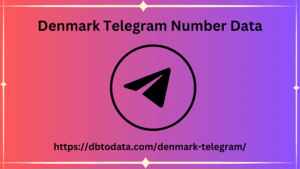Post by amirmukaddas on Mar 13, 2024 22:59:37 GMT -8
In this article we will define the 7 fundamental steps that you must implement so that your business strategy is effective for sustainable growth and to help you achieve your business objectives . If you want to define these steps with extreme precision and minimize the risk of error, you must create a marketing plan where you examine the fundamental aspects of your company: the offer, the target, the market sector, the market positioning and the competitor analysis. Analysis of the current situation The SWOT analysis is a strategic planning tool, the starting point for developing an effective marketing plan and building the future direction of your business. The SWOT Analysis allows you to study the current situation of your company , through the evaluation of four main variables: Strengths ; The strengths are the internal presence of assets, skills, know-how, reviews, awareness and historicity obtained over time.
Weaknesses ; In the SWOT analysis, the weaknesses are the lack of assets and/or skills that can cause the failure or poor results of company initiatives. Opportunities ; Minacce (Threats). In the SWOT analysis, both opportunities and threats are external and cannot be controlled, in fact they depend on macro-trends and the structure of the market. The former are factors that come from society, the economy, technology Denmark Telegram Number Data and the world in general, outside and above the reference market. The influence of a single company is minimal and even large companies, in 99% of cases, are unable to influence these dynamics. Market structure is the degree of competition and the ability to create a sustainable competitive advantage within the market. Definition of company objectives Once you have studied the four main variables of your company thanks to a careful SWOT analysis, it is time to define the company objectives which can be short, medium and long term.

To establish measurable objectives that can be translated into actions you can use the SMART objectives framework . SMART is an acronym that indicates the 5 fundamental qualities that a lens must possess: 1. Specific (well defined and focused); 2. Measurable (with concrete numbers); 3. Achievable (there is no point in setting goals that are out of your reach); 4. Relevant (must be very important for your company); 5. Temporal (to make proper planning, set a deadline). The SMART objectives technique (Specific, Measurable, Attainable, Realistic, Temporal) allows you to motivate the team, define the action plan, better alignment of resources and greater control over the review and modification of any problems in the process phases . NB Each objective must always be in line with the company vision and mission.
Weaknesses ; In the SWOT analysis, the weaknesses are the lack of assets and/or skills that can cause the failure or poor results of company initiatives. Opportunities ; Minacce (Threats). In the SWOT analysis, both opportunities and threats are external and cannot be controlled, in fact they depend on macro-trends and the structure of the market. The former are factors that come from society, the economy, technology Denmark Telegram Number Data and the world in general, outside and above the reference market. The influence of a single company is minimal and even large companies, in 99% of cases, are unable to influence these dynamics. Market structure is the degree of competition and the ability to create a sustainable competitive advantage within the market. Definition of company objectives Once you have studied the four main variables of your company thanks to a careful SWOT analysis, it is time to define the company objectives which can be short, medium and long term.

To establish measurable objectives that can be translated into actions you can use the SMART objectives framework . SMART is an acronym that indicates the 5 fundamental qualities that a lens must possess: 1. Specific (well defined and focused); 2. Measurable (with concrete numbers); 3. Achievable (there is no point in setting goals that are out of your reach); 4. Relevant (must be very important for your company); 5. Temporal (to make proper planning, set a deadline). The SMART objectives technique (Specific, Measurable, Attainable, Realistic, Temporal) allows you to motivate the team, define the action plan, better alignment of resources and greater control over the review and modification of any problems in the process phases . NB Each objective must always be in line with the company vision and mission.
